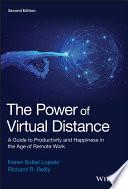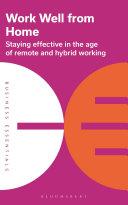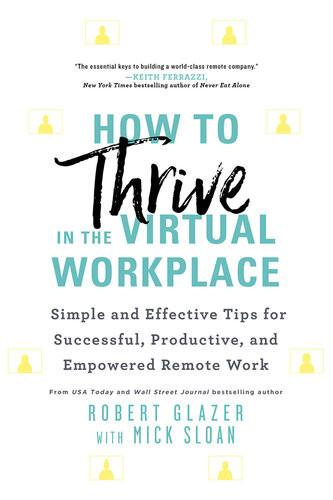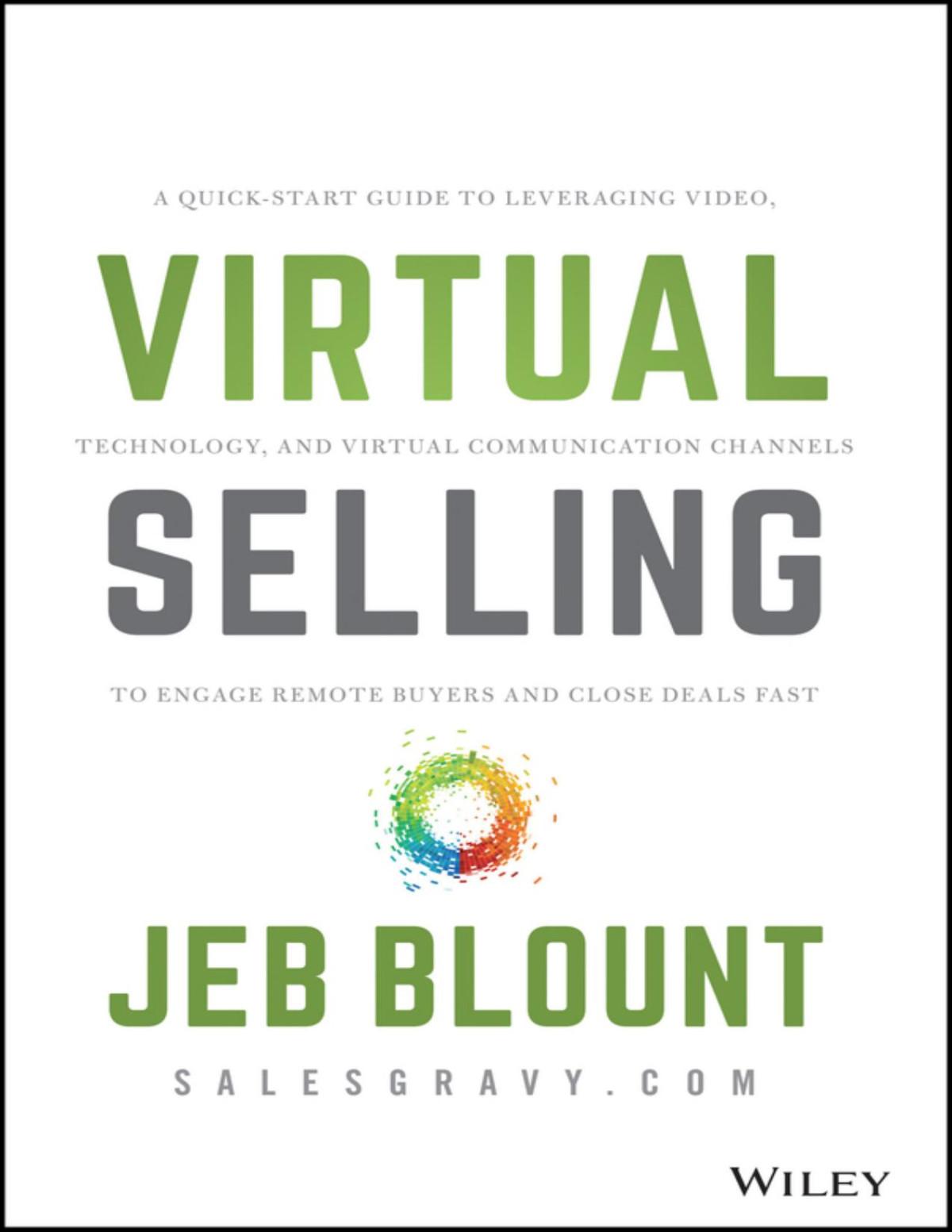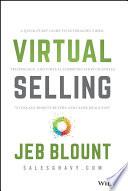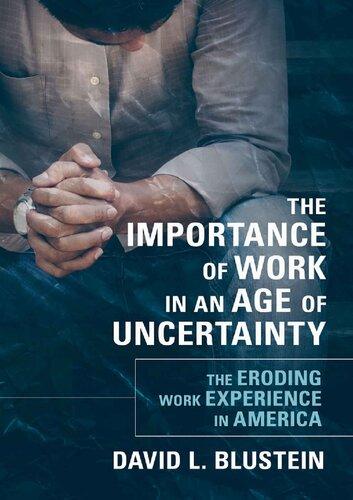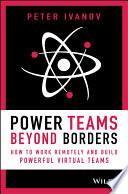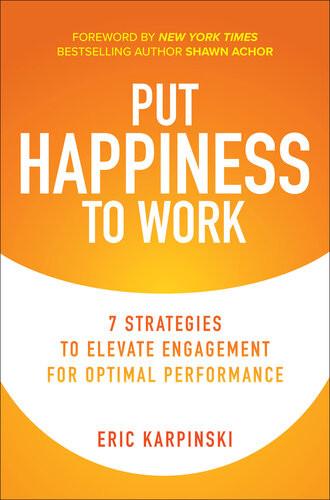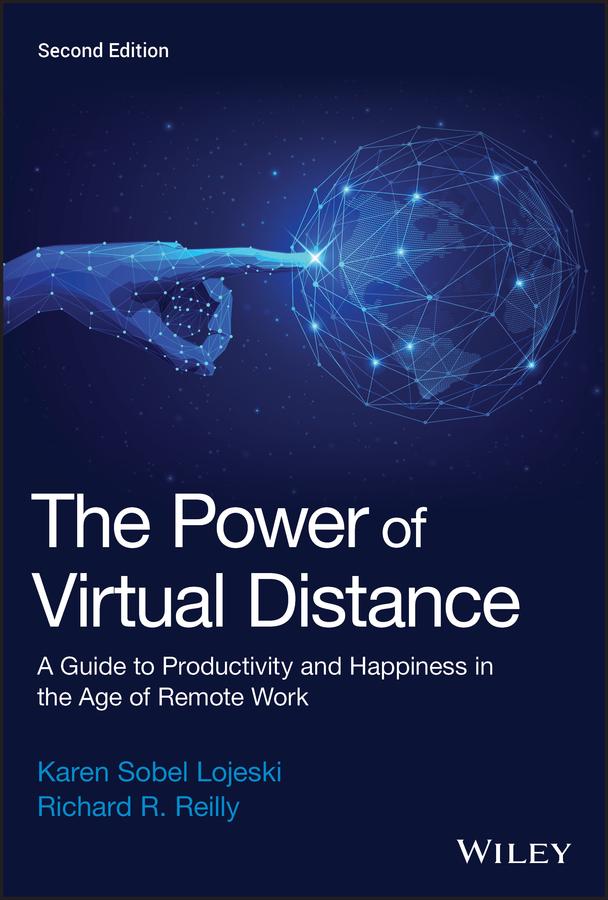THE POWER OF VIRTUAL DISTANCE
AGuidetoProductivityand HappinessintheAgeof RemoteWork
SecondEdition
KAREN SOBEL LOJESKI,PH.D. RICHARD R.REILLY,PH.D.
©2020byKarenSobelLojeskiandRichardR.Reilly.Allrightsreserved. PublishedbyJohnWiley&Sons,Inc.,Hoboken,NewJersey. PublishedsimultaneouslyinCanada.
Nopartofthispublicationmaybereproduced,storedinaretrievalsystem,ortransmittedinany formorbyanymeans,electronic,mechanical,photocopying,recording,scanning,orotherwise, exceptaspermittedunderSection107or108ofthe1976UnitedStatesCopyrightAct,without eitherthepriorwrittenpermissionofthePublisher,orauthorizationthroughpaymentofthe appropriateper-copyfeetotheCopyrightClearanceCenter,Inc.,222RosewoodDrive,Danvers, MA01923,(978)750–8400,fax(978)646–8600,orontheWebat www.copyright.com.Requests tothePublisherforpermissionshouldbeaddressedtothePermissionsDepartment,JohnWiley& Sons,Inc.,111RiverStreet,Hoboken,NJ07030,(201)748–6011,fax(201)748–6008,oronlineat www.wiley.com/go/permissions
VirtualDistance isaregisteredtrademarkofVirtualDistanceInternationalLLC Soul-BasedLeadership and Soul-BasedLiving aretrademarkpendingbyKarenSobelLojeski.
LimitofLiability/DisclaimerofWarranty:Whilethepublisherandauthorhaveusedtheirbestefforts inpreparingthisbook,theymakenorepresentationsorwarrantieswithrespecttotheaccuracyor completenessofthecontentsofthisbookandspecificallydisclaimanyimpliedwarrantiesof merchantabilityorfitnessforaparticularpurpose.Nowarrantymaybecreatedorextendedbysales representativesorwrittensalesmaterials.Theadviceandstrategiescontainedhereinmaynotbe suitableforyoursituation.Youshouldconsultwithaprofessionalwhereappropriate.Neitherthe publishernorauthorshallbeliableforanylossofprofitoranyothercommercialdamages,including butnotlimitedtospecial,incidental,consequential,orotherdamages.
Forgeneralinformationonourotherproductsandservicesorfortechnicalsupport,pleasecontact ourCustomerCareDepartmentwithintheUnitedStatesat(800)762–2974,outsidetheUnited Statesat(317)572–3993,orfax(317)572–4002.
Wileypublishesinavarietyofprintandelectronicformatsandbyprint-on-demand.Somematerial includedwithstandardprintversionsofthisbookmaynotbeincludedine-booksorin print-on-demand.IfthisbookreferstomediasuchasaCDorDVDthatisnotincludedinthe versionyoupurchased,youmaydownloadthismaterialat http://booksupport.wiley.com.Formore informationaboutWileyproducts,visit www.wiley.com
NOTE:Anyviewsoropinionsrepresentedinthisworkarepersonalandbelongsolelytotheauthors andthosequotedorcited.Theydonotrepresentthoseofpeople,institutionsororganizationsthat theymayormaynotbeassociatedwithinanyprofessionalorpersonalcapacity,unlessexplicitly stated.
LibraryofCongressCataloging-in-PublicationData:
Names:SobelLojeski,Karen,author.|Reilly,RichardR.,author.
Title:Thepowerofvirtualdistance:aguidetoproductivityand happinessintheageofremotework/KarenSobelLojeski,Ph.D., RichardR.Reilly,Ph.D.
Othertitles:Unitingthevirtualworkforce
Description:Secondedition.|Hoboken,NewJersey:JohnWiley&Sons, [2020]|Earliereditionpublishedas:Unitingthevirtualworkforce: transformingleadershipandinnovationinthegloballyintegrated enterprise.
Identifiers:LCCN2019058455(print)|LCCN2019058456(ebook)|ISBN 9781119608592(hardback)|ISBN9781119608615(adobepdf)|ISBN 9781119608622(epub)
Subjects:LCSH:Virtualworkteams–Management.| Communication–Technologicalinnovations–Psychologicalaspects.| Alienation(Socialpsychology)|Employeemotivation.|Organizational effectiveness.|Virtualrealityinmanagement.
Classification:LCCHD66.S6482020(print)|LCCHD66(ebook)|DDC 658.4/022–dc23
LCrecordavailableathttps://lccn.loc.gov/2019058455
LCebookrecordavailableathttps://lccn.loc.gov/2019058456
CoverDesign:Wiley
CoverImage:©JackieNiam/GettyImages
PrintedintheUnitedStatesofAmerica
10987654321
RichardReilly:Formywife,Laura
KarenSobelLojeski:Formyhusband,Paul
Chapter8:VirtualDistanceandTechnology
Chapter9:ReimaginingInnovation
Chapter10:Soul-BasedLeadership–AnIntroduction
AppendixA:VirtualDistanceandNeuroscience: ADifferentPerspective269
AppendixB:NotesonSurveyResearchMethodology
AppendixC:ExpandedListofProjectDescriptions305
Preface
Tenyearsago,wepublishedourfirstbookaboutVirtual Distance.
Andwhatwepredictedwouldhappen,didhappen. VirtualDistancehascontinuedtospreadaroundthe world.Itimpactsnotonlybusinessperformancebutalso families,education,healthcare,andanyinstitutionor communitywherepeopleinteractandcommunicate.
TheconcernswehadaboutVirtualDistancebecoming anintensifyingforcepushingustowardanincreasedsense ofsocialisolationandareducedfeelingofwell-being arenowmainstream.Discussionsinpopularmediaand policy-makingcirclesattesttotheconcernoverthe declinesthatVirtualDistancecontinuestocreate.
OurearlydatadocumentedtheimpactVirtualDistance hasonvariouskeyoutcomes.Sinceourfirstbookwe’ve collectedamuchlargerdatasetofmorethan1400studies coveringmorethanthreedozenindustriesspreadover 55differentcountriesoverthelastfifteenyears.Aswe reportinthisbook,theadditionaldataconfirmsand expandsuponourearlierfindings.ThestatisticalrelationshipsbetweenVirtualDistanceandcriticalsuccessfactors arefurthervalidatedwithamuchlargersample.The trenddataalsotellusthatVirtualDistanceisdeepening
andtheeffectsaregettingbigger.Wesuggestthatleaders regardVirtualDistanceasbeing foundational,ratherthan tangentialtohigh-levelorganizationalstrategies.
Throughourcollaborationswithorganizationsthat employmorethanfivemillionpeopleacrosstheglobewe canalsoreportsomegoodnews.We’vefoundthatpredictivesolutionsetsputforthintheoriginalwork,along withstrategiesandtacticsdevelopedinourconsultingand advisorypracticesince,candramaticallyreduceVirtual Distanceandimprovebusinessresultswithpredictable accuracy.Thesestrategiesalsoopendoorsintoarenewed andfeltsenseofhumanconnectednessandrelationship vitalitythatenhancealmosteveryaspectoflifelivedinthe digitalage.
INTRODUCTIONTOVIRTUAL DISTANCE
Simplyput,VirtualDistanceisameasurablesocialand emotionaldisconnect(consciousorunconscious)that ariseswhenweincreasinglyrelyondigitallymediated communicationtechnology.WedetailtheVirtualDistance ModelinChapter3butprovideabriefsummaryhereto highlightkeypoints.
AsshowninFigureP.1,VirtualDistanceiscomposed ofthreemajorfactors:
• PhysicalDistance: Thoseworkplacefeatures thatarefixedinspaceandtimelikegeographic distance,time-zone,andscheduledifferencesaswell asdistinctionsinorganizationalaffiliation.
• OperationalDistance: Thedailynoisethatgetsin thewayoffluid,meaningfulcommunications.
• AffinityDistance: Theissuesthatblockthe developmentofdeeper,long-lasting,andsubstantial relationshipsbuiltuponsharedvaluesandimportant humaninterdependencies.
Aswe’lldiscussingreaterdetaillateron,itsurprises manythatPhysicalDistance,whatwetendtofocusonthe most,actuallyhasthelowestimpactonorganizationaloutcomes.Fromaquantitativepointofview,theextentto whichwe’regeographicallydistributed,comparedtokey performanceindicators,rarelyrisestothelevelofstatistical significance.
It’sAffinityDistancethatmattersmost–thoseaspects ofvirtualworkthatpushusawayfromeachotheras human beings–nomatterifwe’rethousandsofmilesapartorsittingatthesametable.
AsVirtualDistancerisesoverall,andonAffinity Distancemostespecially,ourdecades-plusdatashowthat therearesomestaggeringeffects(seeTableP.1).
FIGURE P.1 TheVirtualDistanceModel.
TABLE P.1 TheimpactofVirtualDistanceonorganizationaloutcomes.
WhenOverallVirtualDistance isrelativelyhigh,keyoutcomes aresignificantlyimpacted
WhenAffinityDistancealoneis relativelyhigh,keyoutcomesare evenmoresignificantlyimpacted
Successfallsby85%Successfallsby82%
Satisfactiongoesdownby80%Satisfactiongoesdownby85%
OrganizationalCitizenship Behaviors(HelpingBehaviors) degradeby75%
OrganizationalCitizenship Behaviors(HelpingBehaviors) degradeby86%
Trustisworseby71%Trustisworseby86%
Learningdecreasesby70%Learningdecreasesby78%
LeadershipEffectivenessislowerby 68%
LeadershipEffectivenessislowerby 77%
Innovationislowerby63%Innovationislowerby73%
EmployeeEngagementfallsby58%EmployeeEngagementfallsby66%
RoleandGoalClaritygoesdown by53%
RoleandGoalClaritygoesdown by54%
StrategicImpactdecreasesby41%StrategicImpactdecreasesby50%
ThefirstcolumninTableI.1showstheimpactof OverallVirtualDistance(allthreefactorscombined).The secondcolumnshowsacomparisonofkeyoutcomes withwhatwefoundtobethemostimportantelementof VirtualDistance:AffinityDistance.
BACKGROUND
Overthelasttwodecades,digitalcommunicationshave ledtogainsforbothindividualsandorganizationsalike. “Smart”digitaldevices(SDDs)thatenableflexiblework havemadeitpossibleforpeopletobuildlivesinwhichthey canbetteraccommodateachangingsetofscenariosfaced bymany:caringforelderlyparents,accommodatingdifferentschedulesforincome-producingfamilymembers,and makingallowancesinorderforworkerstoliveanywhere.
Preface
xiii
Attheorganizationallevel,companieshavebeenbetter abletopositionthemselvescompetitivelybytappingtalent fromallcornersoftheworld,decreasingexpensesrelatedto fixedofficelocationsandbroadeningbrandreachbybeing abletoplacepeopleonthegroundnomatterwherecustomersaresituated.Thereisnodoubtthattheevolutionof workinthiswayisawin-win.
However,that’sonlyatinysnippetofamuchlarger story.Manyleaderskeepclingingtothemistakenperceptionthatgeographicdispersionisthesourceofmostworkforcechallengesleadingtoanextensivesetofunintended consequences.Weseethemeveryday.
Thepasttenyearshasseenanexplosionofarticles, newbusinessstart-ups,andorganizationalchangeinitiatives designedtotacklethetroublesthatsurfaceinremotework. However,thisviewofhowweworklimitsouropticsin termsofthemuchlargershiftinattentionamongthewhole workforce.
Therefore,weemphasize:
ThePrimePrincipleofVirtualDistance
EveryoneisnowvirtualthereforeVirtualDistanceaffectseveryone, everywhere
AnyonewhoworksprimarilythroughanSDDismediatedbymachinesthat
•takethetyped,audio,orothersensoryinput,likethe pressureresultingfromtappingonitsglassfront,from oneperson,then
•turnsitintodigitalsignals(1’sand0s)thedevicecan recognize,then
•movesitthroughwiresandothermechanicalthings, and
•broadcaststheoutputtootherpeople.
Therefore,everyoneworkingundertheseconditionsis virtualbyseveraldegreesinrelationtoothers.
CASEINPOINT
Thinkforamomentaboutsittingatdinnerinarestaurant,or athome,whilepeoplestareatscreens–eithertypingtoeach otherwithonlyatablebetweenthemorexchangingtapped-in messageswithunseenothers.
Eventhoughthey’rephysicallysittingnexttooracross fromeachother,weallknowthatthisconditionchangesthe natureofourhumanexperience.Eventhosesimplyobserving thiskindofeventreporttheycan“feel”thedifference, sometimesthroughtheunexpectedsilenceandblindinglack ofeyecontact.
Wecanberightnexttosomeoneandyetbecompletely focusedonanethereal“somethingorsomeoneelse”–like aghost.
So,inthisbookwedefinebeing“virtual”assomeone whoworksundertheconditionsdescribedintheabove scenarioandthousandsofotherslikeit.Infact,withattentionfocusedelsewhere,geographicseparationissimplyone possibleextensionofbeing“virtual.”
Theoveremphasisonlocation-basedseparationhas otherimplications.Rarelydoorganizationsmeasurethe extenttowhichcontradictoryorconfoundingindicators, suchashavinghighemployeeengagementbutlowtrust, actuallyimpactsthebottomline.
Forinstance,oneofourglobalinsuranceclients required90%ofitsemployeestopunchanelectronic timeclockataspecifiedsetofworldwidelocations.They werequiteshockedtolearnthatVirtualDistancewasthe causeofa$3millionlossonjustoneofmanystrategic ITprojects.TheC-suitewasalsosurprisedwhenwe savedthemmanymillionsmoreovertimeandimproved
Preface xv theircompetitivepositioning.UsingtheVirtualDistance Index(VDI)assessment,wewereabletohomeinontheir specificproblemsandpreciselydirecttherightresources toprovidefixeswhichthenquicklyledtoapositive turnaroundinfinancialresults,employeesatisfaction,and shareholdervalue.
ThephenomenonofVirtualDistancehasother,more seriousimplicationsatahumanlevel.Recently,theleader oforganizationallearningataEuropeaninstitutionshared thiswithus:
Iusedtolovemyjob.I’dgettoworkeverydayandteachpeoplesomethingnew.They’dseehowmuchithelpedthemput theirworkintoabroaderperspectiveandlearnedsomethingthey wouldn’thaveseenotherwise.UsuallyI’dgohomefeelingreally goodaboutmywork.
ButnowIoftenaskmyselfwhydoIcometowork?Tositat adesk,tappingatakeyboardforeighthoursansweringemails, andthengohome?Thisisn’tteachinganyoneanything.Relationshipshavebeenlost.Irarelytalktopeople–justsendnotes aboutgoingtothissoftwaretoolorthatbutnothingthatfeels likeit’smakinganybitofdifference–tomeortothem. ThismakesnosenseandI’mnotsurewhatI’mevendoinghere otherthancollectingthepaycheckIneedtotakecareofmy family.
Unfortunately,thesekindsofcommentsarecommon inourworkwithclientsatalllevels.Butitdoesn’thaveto bethisway.WhenwereduceVirtualDistance,thesekinds offeelingstendtodissipateandemployeesoftenreturnto amoreoptimisticmindsetbecausetheycanbetterbuild closerconnectedness.
Asfinancialandsocialcostsrise,theyreflectwhatwe calltheConnectivityParadoxasseeninFigureP.2:
Themoreconnectedwebecome,themoreisolatedwebegintofeel.
The Connectivity Paradox: The more connected we become, the more isolated we begin to feel.
“Smart” Digital Devices (SDDs)
FIGURE P.2 TheConnectivityParadox.
Asdigitaldevicesadvance,peoplefeelmoredisconnectedfromworkandeachotherthaneverbefore.This createsawideningchasmbetweenrisingproductivity expectations,ontheonehand,andactualproductivity measuresanddecreasingsocialwell-beingontheother.
Let’sbrieflytakeacloserlookataproductivityparadox inthiscontext.
Onedaywereceivedthefollowingwebinquiryfrom oneoftheworld’slargestconsumerpackagedgoods companies:
Bywayofintroduction,IamaDirectoratGlobalCPG Inc.inchargeofsomeleadercapabilitywork.Oneareathat ourmanagershavetoldusisagapistheirabilitytolead globalvirtualteams.Wepilotedtwovendorstodelivertraining withcontrolgroupsandeachreceivedlowmarksbecausethey weresimplyunabletohittherelevantsweetspotourmanagers arelookingfor.Participantstoldusthattherewastoomuch theory,toomanymodels–toomuch“stuff”theycouldget
Preface xvii themselvesontheinternet.Afterreadingatleastsixother booksonvirtualteams,Icameacrossyourbook,andbelieve thattheVirtualDistanceconceptseemstonailtheissuesour managersfacearoundtheglobe.
WewentontodeliverglobalVirtualDistancetrainingandsolutions.Whilepreparingforthatengagementwe learnedfromtheCIOthathewasfrustratedbecausethetop managementteamwasnotseeingthereturnsoninvestment (ROIs)theywereexpectingfromtheirbillion-dollar-plus technologyinvestments.
Atfirst,heplacedmuchofthe“blame”ontheusers fornotusingthetechnologyproperly(althoughadmittedlyhehadnospecificevidenceofthis;justacollection ofvagueanecdotes).Butaftersuccessfullydemonstrating thatreducingVirtualDistanceactually increased technology ROI,mainlybecausepeopleusedmoretechnologycapabilities,notless,hecametorealizethathisinitialassumptionsweresimplytheresultofoutdatedideasinformedby pastexperienceandnotbytheactualitiesofthepresent-day, highlytransformedworkplace.
Thelessonsfromthisstoryaretwofold:
1.Ashumanbeings,wealltendtodefaulttowhatwe knowbesttosolvedifficultproblems.Thisworks wellinsimplecaseswhencauseandeffectareknown andbestpracticescanbeapplied.IntryingtounderstandwhyROIsfallshortinmanymajortechinvestmentsintoday’smorecomplexworldofwork,we needtoallowemergentsolutionstocomeforward: thosethatarenotbiasedtowardill-informedpresumptionsabouthowthingsusedtoworkblindly appliedtohowtheyactuallyworknow.
2.Leadersoftenpubliclyreportanecdotalimpressions ofhigherproductivityresultingfrombiginvestments
intechnology.Butprivately,we’vediscoveredthat manyofthosesameleaders,liketheCIOabove,are aggravatedandsometimesevenremovedfromtheir jobs,becausetheROIjustisn’tthere.Ironically, reducingVirtualDistanceoftenleadspeopleto getthemostfromtechnologyandimprovesROI becausecolleaguesbecomemuchmoreinterested ingetting“closer”tooneanotherandexplore moreofthefeaturesthatmightsupportimproved relationships:improvementsthathavenothingtodo withtechnology,butwiththehuman-basedrealities ofVirtualDistance.
Thedatawe’veamassedoverthetenyearssinceour firsteditionprovethatuncontrolledVirtualDistancealong withthemistakengravitygiventogeographicdispersion leadstonegativeeffectsonboththebottomlineandworker well-being.
Wepredicteditwouldhappenanditdid.
Thispresentsanopportunitytoleveragetheseinsights andimprovecorporateresultsbyconcomitantlyimproving people’slivesbyrestoringmoremeaningfulnessandsatisfactionwithworkbyadoptingVirtualDistancepractices.
Somepeoplesayit’simpossible,theysay“thetrainhas leftthestation.”
However,thegreatthingabouttrainstationsisthat whenonetrainleaves,anotherarrives.
UsingVirtualDistancegivesusachoice;wecangeton adifferenttrainandtakeadifferentroutemovingforward.
WHAT’SNEWINTHESECONDEDITION
Muchofthecontentfromthefirsteditionremainsinplace, asitisfundamentaltounderstandingandreducingVirtual Distance.Thesense-makingscaffoldingprovidedbythe
Preface xix
originalVirtualDistanceModel,withoneminorexception,hasnotchanged,andhasstoodthetestoftime.
Theframeworkstillservesasthemostvaluablewayto quicklygainastrongandsteadyfootholdonwhatisotherwiseanamorphousandsenselesssetoffoggy,disconnected, andseeminglyrandomsetofsymptomsthatunderneath, pointtoamuchlargerproblem.Inmanyofthecasestudies presented,decision-makerswhoaddressedVirtualDistance directly,usingprescribedVirtualDistancesolutions,were abletogettotherootcauseoftheissuesstandinginthe wayofclosercollaborationwhichleadtobetterfinancial andinnovativeresults.
Updateshavebeenmadetovariousgraphsandcharts toreflectwhat’shappenedinthepastdecade.Inaddition, basedonwhatwe’veuncoveredsincethefirstedition,we’ve addednewcontentthatreflectsdeeperinsightsintohow VirtualDistanceischangingthelandscapeofwork.They include:
•AnewIntroduction,“WeAretheData”,specifically focusesonthelasttenyears’worthofadditionaland cumulativeempiricaldataanalysesovertime,and follow-onimpactstobusinessresultsandpeople’s experienceofwork.
•Manynewcasestudiesreflectingabroadersetofthe worldwideworkforcefrom55countriesacrossmore thanthreedozenindustries.
•Newdiscoveriesbasedonempiricalevidenceabout thewaysinwhichVirtualDistanceimpactsdifferent generationsandremoteversusin-personworker complements.We’vealsodescribednewinsights revealedbyoursignificantlyexpandedworkwith peoplewhohavevaryingtenureanddifferent hierarchicalpositionsspreadacrossanexpansive panoramaofglobalprojectsandworkscenarios. Morespecificexamplesaredescribedinnewor
updatedcasestudies.Additionaldetailsareprovided intheappendices.
•We’vealsopepperedthebookwiththoughtexperiments:exercisesintendedtomakeiteasiertomore directlyexperienceandunderstandtheinfluencesof VirtualDistanceoneverydayworkandlife.
Finally,we’veaddedvarious“MythBusters”to showcasenumerousexamplesofcounterintuitivefindings thatshatterstronglyingrainedmythsaboutorganizational behavior,design,andstrategyinournewworldofwork. Despitethefactthatmanyleadershipchallengesarenew, asabusinesscommunitywecontinuetoover-relyon managementthinkingandsolutionsthatwerefundamentallydesignedaroundwhatarenow,outdatedassumptions. MythBustersalsohighlightsomeofthemostwidelyheld andlargelymisleadingbeliefsaboutthewayworkactually functionswhenthemostmeaningfulhumandynamics disappearbehindvirtualcurtains.
HOWTHEBOOKISORGANIZED
Introduction:WearetheData providesa“bigpicture” viewofthedataandfindingswe’veuncoveredoverthe lastfifteenyears.Thechapterisstructuredinawaythat wehopehelpsthereaderrelatetothenumbersinmore personalways–notjustasvagueanalytics.Weintroduce theconceptof Human Oriented Meaningful Experience (HOME)asanewwaytoseehowwe are thedata,not justoutsidersbeingimpactedbytrendlinesthatarebeyond ussomehow.Wediscussmajorinfluencesshapingworkplacetransformationandrevealcounterintuitivefindings thatmayhelpthereadertakeadifferentapproachtoreshapingworkoverthedecadestocome.
Chapter1:TheRoadtoVirtualDistance takes thereaderthroughthestoryofhowVirtualDistancewas
Preface xxi discovered.Thebackgroundishelpfulasawaytoplace perspectivearoundhowwequantitativelymeasureVirtual Distanceanditseffectsonbusinessoutcomeswhichhave sinceledustoanever-before-achievedmathematical relationship: TheVirtualDistanceRatio.
Chapter2:RedefiningDistance givesthereadera historicalviewof“distance,”exposingtheso-called“death ofdistance”asamythandshowinghowourunderstanding ofdistanceinthevirtualworkplaceisill-informedbyfocusingonPhysicalDistancealone.Wedescribehowincluding theothertwomaincomponentsofVirtualDistance,havingmoretodowiththepsychologicalgulfsbetweenus, developedaswetaponourkeyboardsinsteadofexperiencingoneanotherinthecontextofalargerworld,isleading businessastray.
Chapter3:MeetingVirtualDistance discussesthe VirtualDistanceModelanditsthreemajorcomponents: PhysicalDistance,OperationalDistance,andAffinity Distance.
Chapter4:MeasuringVirtualDistance detailshow VirtualDistanceismeasuredusingtheVirtualDistance Index(VDI),thetoolwedevelopedtoquantifyhow VirtualDistanceaffectsthemostimportantaspectsofwork thathasstoodthetestoftimeformorethanadecade.In thischapterwedetailtheimpactsVirtualDistancehashad onkeyperformanceindicatorsoverthelastfifteenyears.
Chapter5:MappingVirtualDistance explainshow VirtualDistancecanbe“seen”throughVirtualDistance Mapping:atechniquethatilluminateswhatwecallCritical RelationshipPaths(CRPs),alongwhichVirtualDistance shouldbereducedtoavoidprojectfailure.
Chapter6:ManagingVirtualDistance describes specificstrategiesandtacticstoreduceandmanageVirtual Distanceovertime.
Chapter7:RedefiningTeams focusesonhowvirtual workhaschangedthewayteamsworkandhowVirtual
Distanceoffersauniqueuniversallanguagethattranscends eventhemostculturallydiverseandindividualizedteam members.
Chapter8:VirtualDistanceandTechnology highlightstheimportantpointthattechnologyisnotthe mainissuewhenitcomestothechangingworldofwork. Wecontinuetoshowevidencethatit’sthepeople,not thetechnology,thataremostimportanttoworkandthe futureoftheorganization.Nevertheless,manypeopleask howtechnologyrelatestothisprocess;therefore,wechose toleavethischapterinthiseditionofthebooktogive guidanceonhowtoselecttechnologyandsoftwarein serviceofreducingVirtualDistance.
Chapter9:ReimaginingInnovation describeshow VirtualDistanceandinnovationareinherentlylinked.Left uncontrolled,VirtualDistancecancorrodeinnovationinitiativesseverely.Weprovidecrucialguidelinesonhowto avoidthiskeythreatandinsteadleveragetheVirtualDistanceModeltounderstandhowtogetthemostoutof innovationateachphaseinthatprocess.
Chapter10:Soul-BasedLeadershipTM –An Introduction revealsanever-before-seenleadership model,Soul-BasedLeadership,anddiscusseswhy,when leadershipisviewedinthismosthumancontext,wecan useentirelydifferentmentalmodelsandexperience-based practicestorestorehigherlevelsofmeaningandwell-being backintowork.
Appendices include:
In AppendixA – VirtualDistanceandNeuroscience:ADifferentPerspective,weinterview MartinWestwell,ourcolleague,friend,andglobal expertincognitiveneuroscience,education,and workforce.Inthisappendix,heshareshisviews onhowVirtualDistanceandneuroscienceare integrallyconnected.Healsoshareshisthoughtson
Preface xxiii howcommunicationtechnologyischangingthe rulesofhumaninteractions;hassignificantnegative impactsonourexperienceofbelonging,purpose, andultimatelyhowwelearn;andpointsoutakey cautionfromtheOECDaroundbeingcarefulnot tocreatesecond-classrobotsinsteadoffirst-class humansaswemoveaheadwitheducationpolicy andthefutureofwork.
In AppendixB – NotesonSurveyResearch MethodologyandVirtualDistance,weshare someadditionaldetailaroundthetouchstones requiredforrigorousresearchmethodologyand surveyresearchinsocialsciences.Wethenreveal howthedevelopmentoftheVirtualDistance Indexandthediscoveriesthatfollowedusedthese importantcriteria.
In AppendixC – ExpandedListofProjectDescriptions,welistmanyexamplesofthekinds ofworkourVirtualDistanceparticipantswere involvedovertheselastfifteenyears.Aspartof the Human Oriented Meaningful Experience (HOME)conceptdescribedintheIntroduction, wewantedtoshareasmanyexamplesaspossibleso thereaderisabletoseethemselvesinthedata,given thelikelihoodthattheysharesimilarexperiences withmanydifferentcombinationsofcircumstance.
